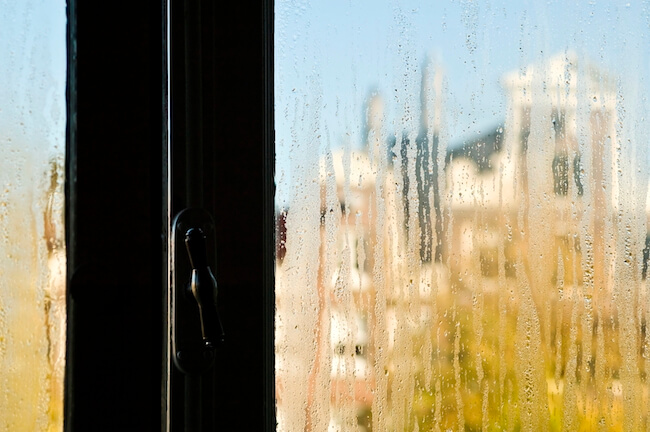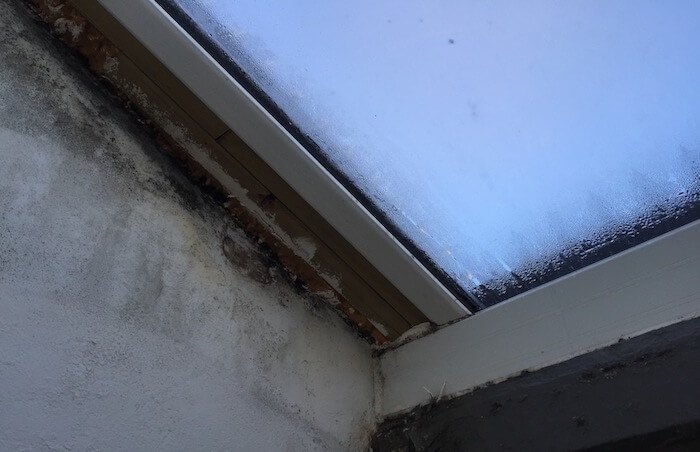Complete Guide to Ventilation and Condensation Control
Condensation can lead to a whole range of problems. It is also a very visible problem, especially in the colder winter months.
Condensation control and adequate ventilation in a property are extremely important, as left untreated condensation can lead to damp and mould problems as well as aggravating health conditions.
WHAT VENTILATION OPTIONS ARE THERE?

WHAT IS CONDENSATION?
Condensation occurs when moist air comes into contact with air, or a surface, which is at a lower temperature. Air contains water vapour in varying quantities; its capacity to do so is related to its temperature – warm air holds more moisture than cold air. When moist air comes into contact with a colder surface, the air condenses some of its moisture onto that surface.
The air in our homes contains water vapour from cooking, washing, drying clothes and other activities. During cold weather this warm, moist air travels to cooler parts of our homes. The excess water vapour in the air then deposits on cold, impermeable surfaces such as windows and, in some cases, walls. This is called condensation. Condensation can also occur in less visible places like behind furniture, blocked-in fireplaces and underneath laminate flooring.
CAUSES OF CONDENSATION
In order to make homes more energy efficient, some are fitted with insulation, cladding and made air-tight with double glazing. This means that the moist air generated by everyday activities (as detailed above) is unable to escape which leads to condensation. The conditions that determine condensation are as follows:
- The level of moisture in the air
- The temperature of the air in your home
- The surface temperature of the windows & walls and other surfaces
DO I HAVE CONDENSATION?
Condensation is generally noticeable when it forms on non-absorbent surfaces (i.e. windows or tiles) but it can form on any surface. You may not notice condensation until you can see mould growth or see materials rotting. Any room in a house that is colder will act as a magnet for condensation.
The following symptoms suggest you have condensation:
- Steamed-up windows and puddles of water on the window sills
- Walls that are damp to touch
- Peeling wallpaper
- Black spots of mould on walls and ceilings – particularly common in bathrooms
- A musty smell
PROBLEMS WITH CONDENSATION
Condensation can lead to a whole range of damp and mould problems. Some of these cause cosmetic damage, some of these will incur financial costs and others can actually be harmful to the health of you and your family.
Condensation can lead to mould which in turn results in mould spores that easily become airborne. When inhaled, these microscopic spores can trigger a range of respiratory conditions such as asthma, dust allergies and hayfever. This is particularly harmful to young child and older people.
Condensation is a problem caused when there is inadequate ventilation. Poor ventilation is also associated with headaches, tiredness, and dizziness, and in extreme cases carbon monoxide poisoning.
There are increasingly worrying reports about so-called Toxic House Syndrome, which is when a person’s health deteriorates due to the air quality in their homes. It is related to the large number of potentially harmful chemicals like carbon monoxide and dander in our homes that increase the risk of heart disease and cancer. Proper ventilation is the main way that exposure to these airborne pollutants can be dramatically reduced.

HOW DO I CONTROL CONDENSATION?
Condensation can be controlled through ventilation. There are a variety of different ventilation methods and systems that can focus on single rooms or be installed to ventilate whole homes.
Ventilation
You want to achieve these things with ventilation:
- No more condensation
- No more damp, stale air
- Clean, filtered fresh air
As a good starting point, it makes sense to take measures to create less moisture. You can put lids on pans when cooking, add cold water before hot water when running a bath, dry clothes outdoors or in a room with a humidity-controlled extractor fan, avoid drying damp clothes on warm radiators. You should also regulate heating so that is constantly on at a lower heat. By preventing rapid changes in the temperature, you will help reduce condensation. You should also regularly open windows to allow cross ventilation.
Despite taking these initial steps, you are likely to find that condensation is still an issue, particularly in colder months. Correctly installed ventilation systems are the most effective way of stopping condensation. The issue of heat loss is one that is inherent with ventilation and must be addressed by the system. The common ventilation systems include passive ventilation systems, humidity controlled extractor fans, passive stack ventilation, and heat recovery units.
Key Considerations When Looking at Ventilation Systems
- Suitability for property – the type of property you are ventilating should determine which ventilation method you use. Bungalows and flats are different than houses. The number of wet rooms, the type of roof, your ability to install ducts and grilles all have an impact.
- Costs – this includes initial outlay and running costs. Many ventilation systems have low running costs and the initial costs are offset in fuel efficiency.
- Noise – units needs to be quiet, both during normal and boost modes.
- Ease of installation – as well as the initial installation, you will want a ventilation system which requires very low levels of maintenance.
- Compliance with the Building Regulation Ventilation Requirements – it must meet Part F & L England and Wales and contributes towards ‘conservation of fuel and power.’
Why Ventilation is a Good Idea
Ventilation is not only the best way of preventing condensation in your home, it will also dramatically improve indoor air quality. Most ventilation systems provide health benefits by reducing naturally-occurring Radon gas and carbon monoxide. As well as this, many units are equipped with filters capable of removing up to 95% dust particles and other allergens. This can include pollen filters that can both help you keep cool indoors and enjoy the benefits of fresh pollen-free air. Hayfever sufferers can benefit massively from a place where they can escape pollen and focus on bringing the symptoms under control.
There are four types of ventilation system outlined in the Building Regulations:
- System 1 – Intermittent fans and background ventilation
- System 2 – Passive stack
- System 3 – Continuous mechanical extract ventilation (MEV)
- System 4 – Continuous mechanical balanced ventilation with heat recovery
Single Room Ventilation
When looking to ventilate a single room in your home, usually one more prone to moisture and condensation, there are a few options. Single room ventilation can cover everything from simple passive vents to heat-recovery units.
Intermittent Extraction Fans / Extractor Fans
In the past, it was common for mechanical extraction to be used in wet rooms (rooms with more moisture like kitchens and bathrooms) to remove moisture and bad smells. These fans use more energy and cost more to run but also remove valuable heat from the home, pumping it outside. The preferred alternative today is an individual room heat-recovery ventilator.
Single-room Heat-recovery unit
Heat Recovery ventilation systems replace stale moist air with filtered, fresh and warm air from outside. As the stale air is drawn out it passes over a heat exchanger, which traps (recovers) the heat from the outgoing air in order to warm the incoming fresh air. This dramatically reduces the amount of heat wasted and reduces home energy bills. These units provide a continuous air change.
When humidity levels increase, the unit automatically switches to a boost mode. You have the ability to set the humidity level at which boost mode is activated to ensure that condensation does not occur. When humidity levels have returned to an acceptable level the heat recovery unit returns to its standard trickle mode.
A good option is a Vent Axia Heat Save Heat Recovery unit. Each unit contains a reversible fan that changes direction after 70 seconds, alternating between blowing fresh air in and getting rid of warm moist air. An integrated thermal accumulator collects up to 84% of heat, saving money on bills and limiting your negative impact on the environment.
The Kair Heat Recovery Unit recovers up to 86% of heat, making it an effective source of ventilation with heat recovery for a single room. You can find out more about installing a Kair unit here. The Monsoon Energysaver for houses is a positive pressure system that introduces fresh, heated air in a highly effective way.
Natural Ventilation
You can buy passive vents that work by using vapour air differences to ventilate a room. These systems utilise the scientific principle that when the room temperature and humidity are greater internally than those externally, then moist air will ventilate outside. These vents, like our best-selling Perma-Vent, contain no moving parts and therefore require zero maintenance. They use a vapour permeable membrane, which allows moist air out of the building without allowing a draught back inside.

